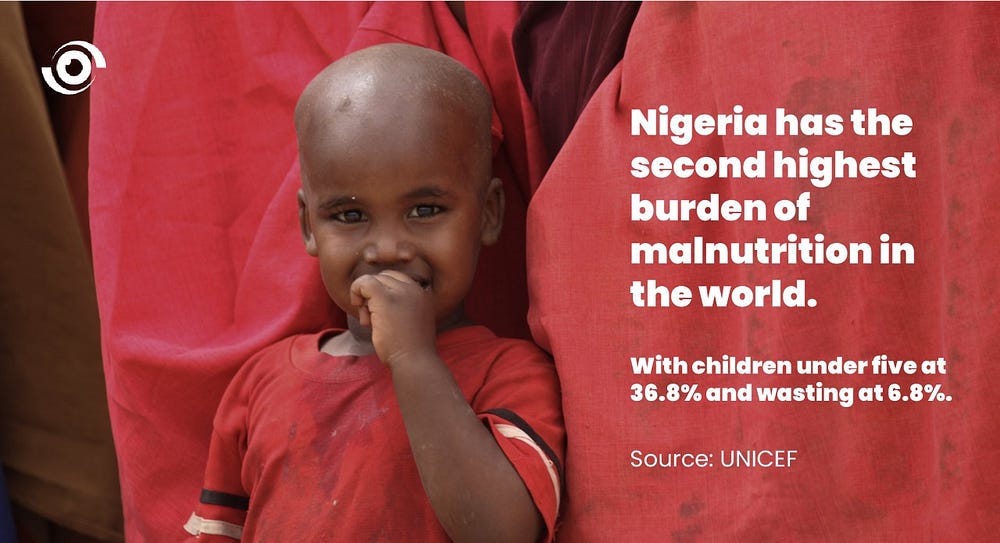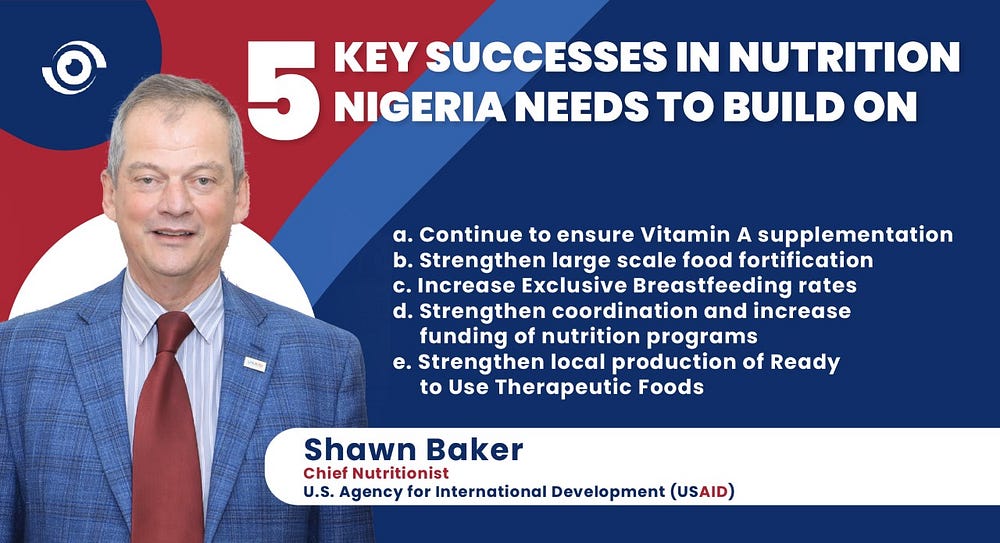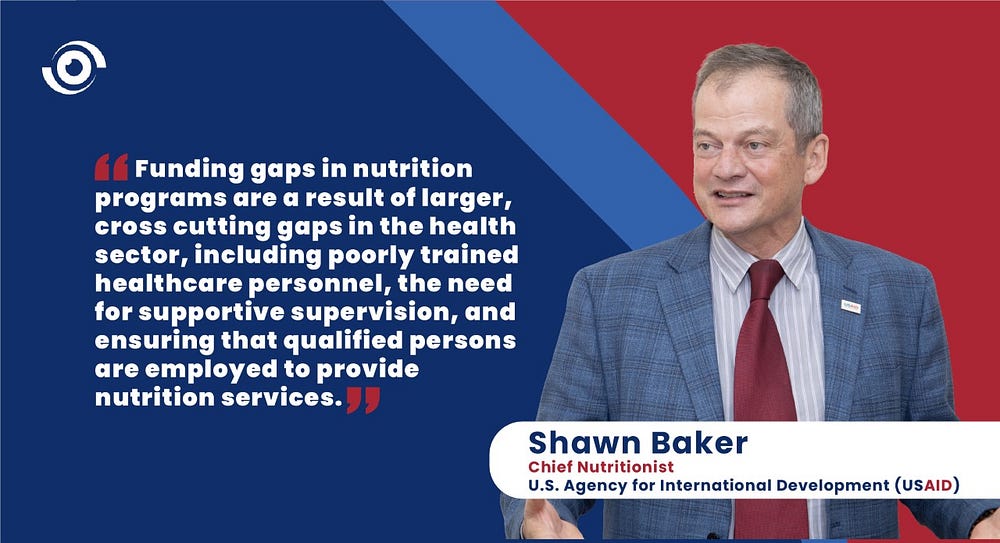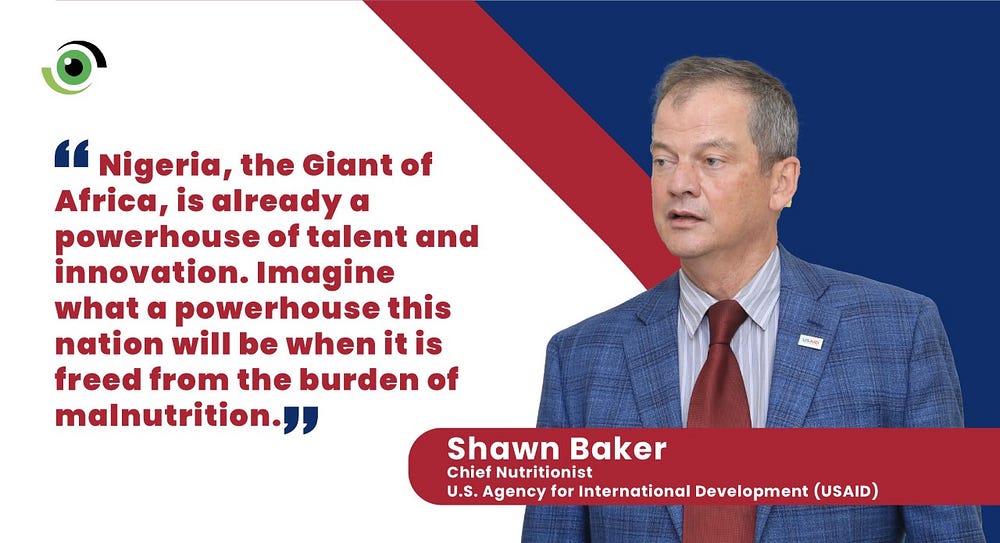Shawn Baker, Chief Nutritionist for the U.S. Agency for International Development (USAID) was in Nigeria in September, and in an interview with Nigeria Health Watch, he shared his insights on Nigeria’s progress in ending malnutrition and offered key recommendations to bridge persistent gaps.
Mr. Baker reflected on the impact the COVID-19 pandemic, climate change and conflict has had on food security. This is of particular concern to Nigeria, given that the number of children who need treatment for wasting continues to rise; up to 2 million children in Nigeria suffer from severe acute malnutrition. Below are highlights of the interview.

Is there a silver lining?
Despite the grim nutrition statistics in Nigeria, Mr. Baker remains optimistic and cites his visit to a primary health care centre in Abuja as one of the highlights of his trip. At the centre, he saw clear evidence of effective approaches to tackle malnutrition. “Here you have moms who have been supported during pregnancy to get the nutrition they need; at birth they are supported to initiate breastfeeding immediately and to breastfeed exclusively for 6 months. Parents were coming in because their babies had just turned 6 months, and it was time to get counselling on complementary feeding. You could see how these babies were glowing with vibrant health… and how fulfilled the frontline workers were. That clinic represents things working, and things working means babies thriving.” Most importantly, these approaches were primarily driven by the Nigerian government.

He discussed five key successes Nigeria can build on to further strengthen nutrition interventions.
1. Vitamin A supplementation
Vitamin A supplementation is important because evidence shows that countries that have high malnutrition rates also have Vitamin A deficiency issues. Vitamin A supplementation was largely driven by immunisation campaigns done on maternal and child health days, but due to restrictions imposed during the COVID-19 pandemic, coverage rates dropped drastically. However, with the relaxation of those restrictions and resumption of the campaigns, Nigeria is on track to getting coverage rates up again.
2. Large scale food fortification
Ensuring that staple foods are fortified with the right nutrients; for example, ensuring enough iodine in salt, folic acid and iron in wheat flour, vitamin A in cooking oil is crucial given the current inflation in food prices. Nigeria has for many years led in the area of salt iodisation, and improved industry compliance in this regard.
3. Exclusive breastfeeding
The standard is to initiate breastfeeding within the first hour of birth, exclusively breastfeed for six months, and continue with complementary feeding for up to 2 years. Exclusive breastfeeding (EBF) rates in Nigeria have been on an upward trajectory, from 17% in 2013 to 29% in 2018 and 34% in 2021. Though the target rate for optimal levels of EBF is 70% prevalence by 2030, this is still significant progress given Nigeria’s large population.
4. Coordination and funding of nutrition programmes
The National Council on Nutrition was established in 2007, and it has, since 2017, become an effective platform for coordination of nutrition interventions in the country. The development of multisector strategic plans; recent discussions around upgrading nutrition divisions to departments; and instituting line items for these departments in annual appropriations are key milestones on the road to strengthening nutrition programming in the country.
To build on the successes, he cited the need to ensure strong multisector coordination, including identifying the coordination agency, the Federal Ministry of Finance, Budget, and National Planning, clearly defining roles and responsibilities for each participating Ministry, Department or Agency (MDA) and instituting strong accountability mechanisms.
5. Ready to Use Therapeutic Foods
Nigeria has the local capacity to manufacture Ready to Use Therapeutic Foods (RUTF); energy, vitamin and mineral rich foods used to treat severe acute malnutrition. The country also has the potential to produce enough RUTF for the West African region and even the rest of Africa. This is critical as the price of RUTFs is projected to increase.
How can persistent gaps be plugged?
When a woman attends her antenatal visits, she is given micronutrient supplements, such as Folic Acid and Iron. Children are also given supplements during their routine childcare clinics, such as Zinc, Vitamin A, as well as deworming tablets; all of which significantly boost their nutrition status. However, these micronutrient fortification programmes are still largely donor funded, and the federal and state governments need to take charge of these programmes and allocate funds to them.
Key funding gaps in nutrition programmes are due to larger, cross cutting gaps in the health sector, including poorly trained healthcare personnel, the need for supportive supervision, and ensuring that qualified persons are employed to provide nutrition services. These resource gaps need to be addressed.

There is also a need to ensure an enabling environment for local RUTF manufacturers, such as instituting favourable fiscal policies like tax exemptions. Most of the ingredients are still largely imported because of concerns regarding adherence to safety standards. In the interim, local capacity can be built to produce similar products that will provide children with high quality proteins, essential fatty acids, vitamins, and minerals which can be used to prevent malnutrition and reduce the percentage of children who are on the minimum acceptable diet spectrum. Production will also strengthen small and medium enterprises (SMEs), create jobs, and lead to economic growth in Nigeria, the Economic Community of West African States (ECOWAS) region, and the rest of Africa. For this to happen, SMEs need access to funding and technical assistance.

A rallying call to fight
Nigeria has the second highest burden of malnutrition in the world, with the 2018 Nigeria Demographic Health Survey (NDHS) showing the stunting rate for children under five at 36.8%, and wasting at 6.8%. Reduced immunity is one of the adverse effects of malnutrition, it leaves children susceptible to infections and increases the risk of death, which statistics show is the underlying cause of 45% of deaths in children under five years of age. It can also lead to reduced cognitive development and performance in school, which results in low productivity in adulthood. This can potentially cause a gross domestic product (GDP) loss of up to 11%.

The African Union has demonstrated its commitment to ending malnutrition on the continent and made nutrition its 2022 theme after the 2021 Nutrition for Growth Summit. However, because Nigeria has the highest burden of malnutrition in the region, the country must take the lead in the fight, for Africa to make significant progress.
Mr Baker’s speech at the launch and dissemination of the Nutrition Policy, Strategy and Guidelines by USAID should therefore serve as a rallying call, “Nigeria, the Giant of Africa, is already a powerhouse of talent and innovation. Imagine what a powerhouse this nation will be when it is freed from the burden of malnutrition.”


